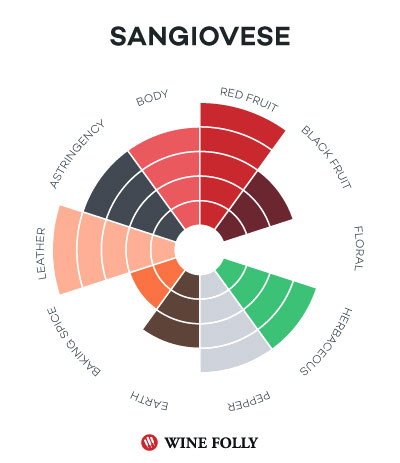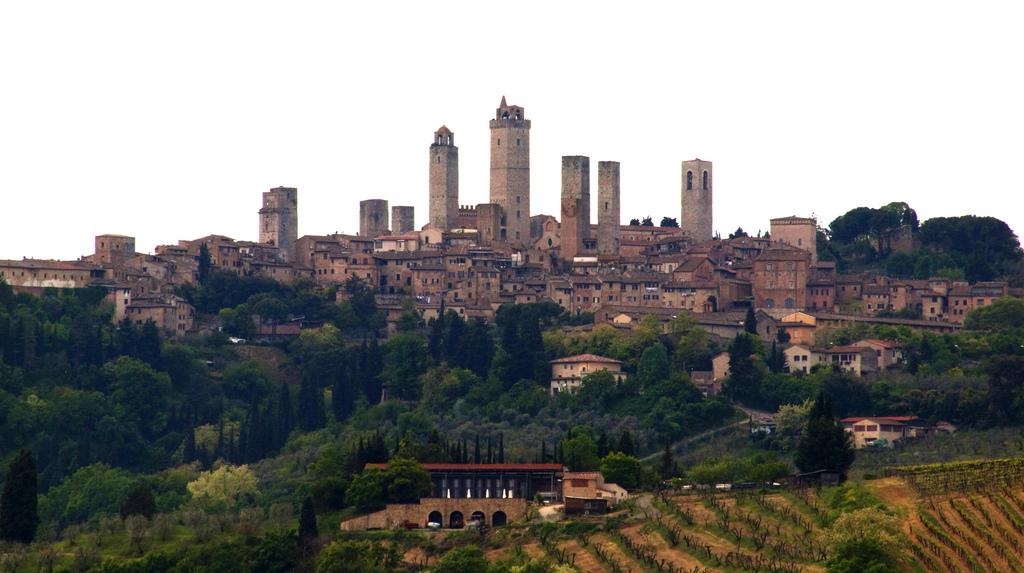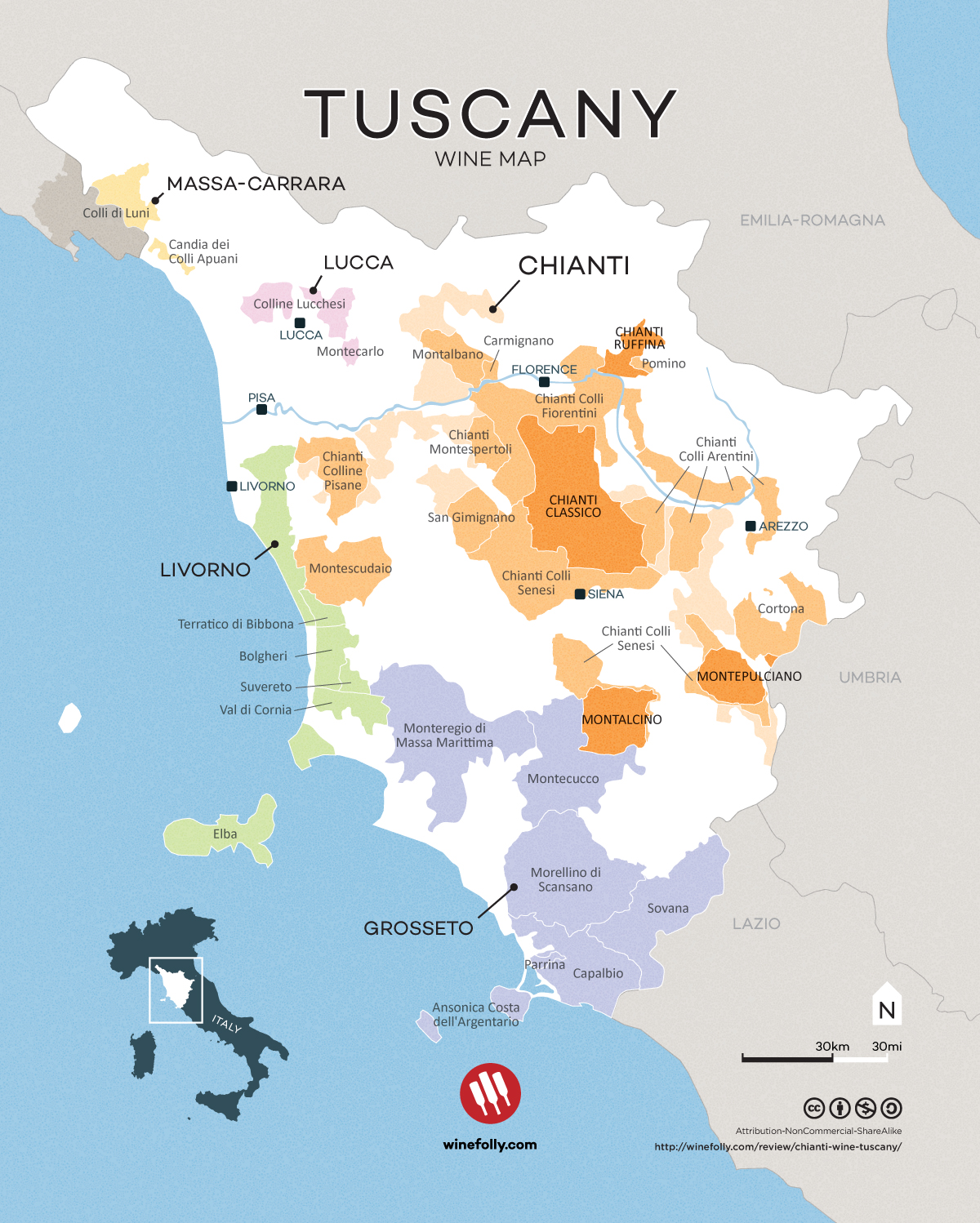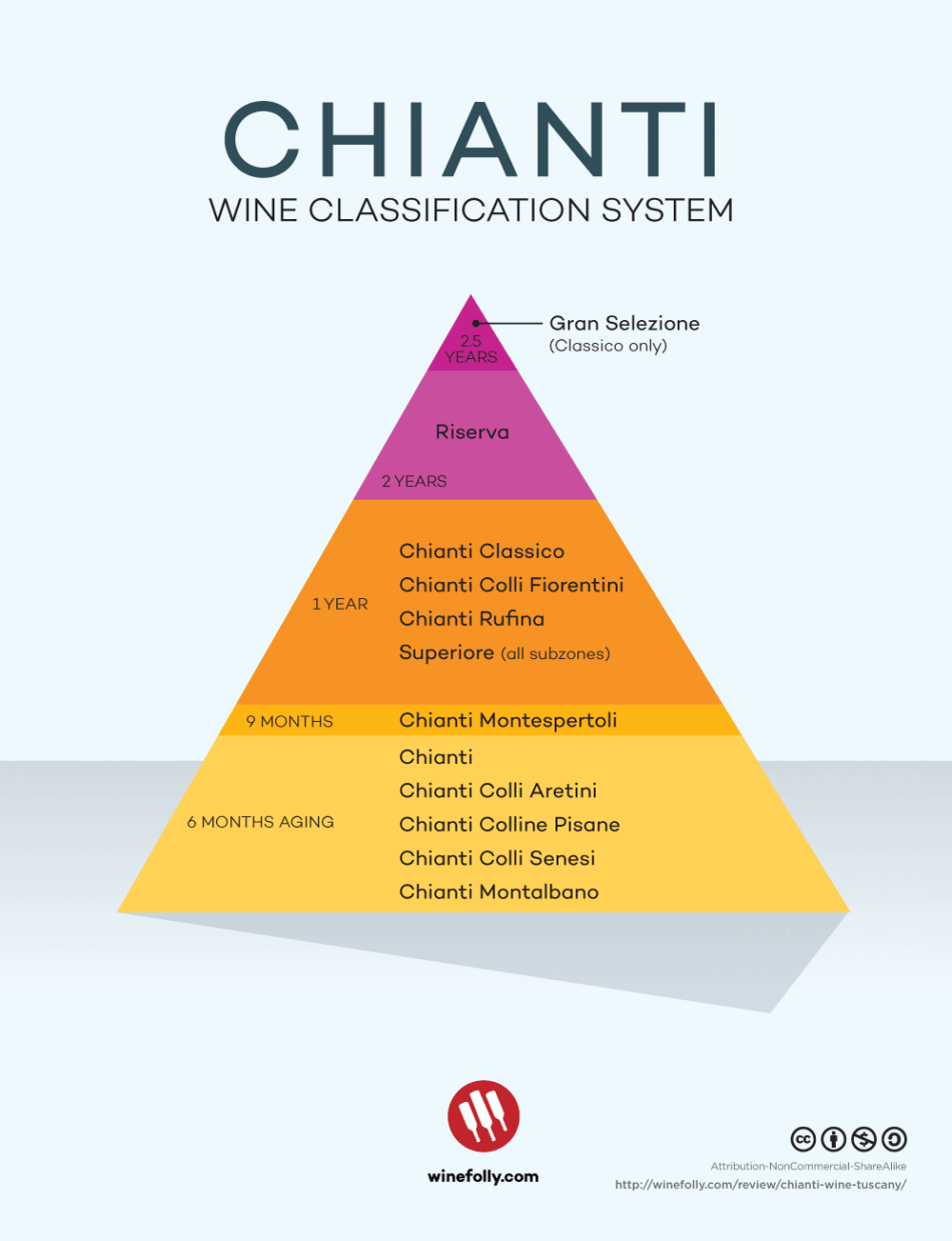Chianti wine is as essential to Italian cuisine as extra virgin olive oil. There are few pleasures as distinct as a tart, spicy, herbaceous Chianti wine next to a plate of sliced prosciutto or pasta al pomodoro.
Find out more about this savory delight, including the levels of the official classification and how to pick out quality.

What Is Chianti Wine?
Why is Chianti more written about, drank, and talked about than any other Italian wine in history? What makes Chianti perfect food wine? We will tackle these questions and more in our exploration of Chianti wine.
Chianti wine (“kee-on-tee”) is a red blend from Tuscany, Italy, made primarily with Sangiovese grapes.

Common tasting notes include red fruits, dried herbs, balsamic vinegar, smoke, and game. On the high end, wines offer notes of preserved sour cherries, dried oregano, balsamic reduction, dry salami, espresso, and sweet tobacco.
Chianti Is Sangiovese
The main grape used in Chianti is Sangiovese. It is a thin-skinned variety and, therefore, makes pale-colored wines.
In the glass, Sangiovese is ruby red with flashes of bright burnt orange — a hue commonly associated with aged wines.
Besides Sangiovese, Chianti wines may contain wine grapes like Canaiolo, Colorino, Cabernet Sauvignon, and even Merlot. White grapes were once allowed in Chianti Classico, but not anymore.
The best example of Chianti is a visceral tasting experience. Imagine the smells as you walk through an Italian grocery store: at the entrance, there’s a bowl of preserved sour Amarena cherries. You walk under bunches of dried oregano, past a wall of dark, aromatic balsamic vinegar, and then pass a counter where dry salami is being sliced. At the bar, dark espresso drips into a ceramic tazza. A whisper of sweet tobacco wafts in the door from an old man’s pipe outside.
Chianti smells and tastes like Italy. There will be a little coarseness and tartness on the palate, but these aren’t flaws; they are classic characteristics of Sangiovese.
Learn from a real tasting of Chianti through the Wine Tasting Challenge: Chianti.

Chianti Food Pairing
Chianti has savory flavors paired with high acidity and coarse tannin, which makes it an incredible wine with food. The high acid cuts through richer fatty dishes and stands up to tomato sauces. Pizza is a favorite pairing and works with all styles of Sangiovese, from lighter Chianti wines to richer Brunello di Montalcino.
All that dry, powdery tannin makes Chianti wines ideal with dishes that use olive oil or highlight rich pieces of meat such as Bistecca Alla Fiorentina, a dry-aged porterhouse steak from the grass-fed and grain-finished Chianina cattle. When done properly, it’s one of the most succulent meat dishes on the planet.
Tuscany Wine Map
Wines labelled “Chianti” can come from a vast region within Tuscany, from the foothills of the Appenines to the flatter plains. For some of the best expressions of Sangiovese, you need to look into higher elevations.
The original boundaries of Chianti, where wines are made in smaller quantities and of higher quality, come from Chianti Classico DOCG. These wines tend to age well. The best wines from Chianti Classico will be labelled as Riserva or Gran Selezione.
Within the larger DOCG of Chianti there are seven sub-zones:
- Colli Senesi
- Colline Pisane
- Colli Aretini
- Montalbano
- Montespertoli
- Rufina
- Colli Fiorentini

The most serious examples of Chianti Classico come from a small group of villages from Siena in the south to the hills above Florence. The Classico region’s warm climate and clay-based soils, such as Galestro marl and Alberese sandstone, produce the boldest Chianti wines.
Aging & Classifications of Chianti
As Sangiovese (Chianti’s main grape) grows, it becomes savory, loses color, and softens its tannins. But only the best wines can age over a long period of time. Here are some labelling terms that you might see on either Chianti or Chianti Classico wines.
- Chianti: Aged for 6 months. Young, simple, tart, and fresh.
- Superiore: Aged for a year. Slightly bolder wines with smoother tannin.
- Riserva: Aged for 2 years. Usually, the top wines of a Chianti producer. These will normally have some oak aromas, such as vanilla or spice.
- Gran Selezione: Aged for at least 2.5 years (only found in Chianti Classico). Some of the most sought after wines in Tuscany with intense tannins, flavors, and aromas ranging from dried cherry, smoke, balsamic, and leather aromas.


